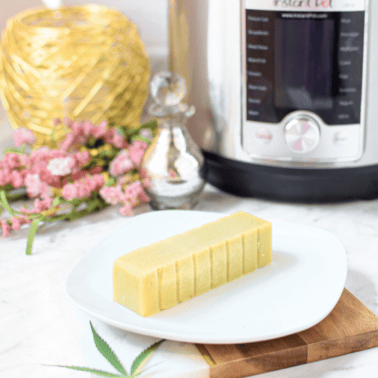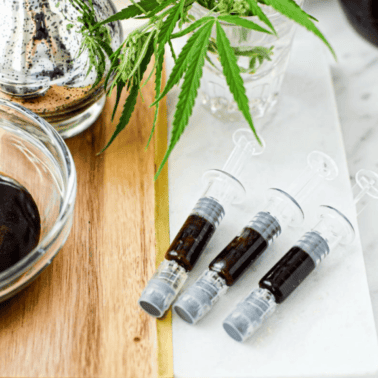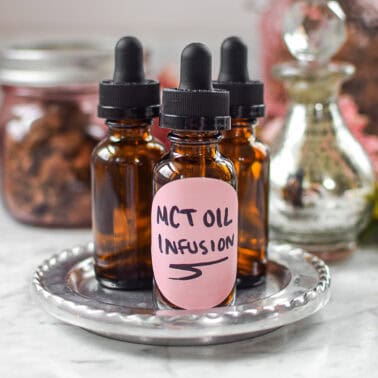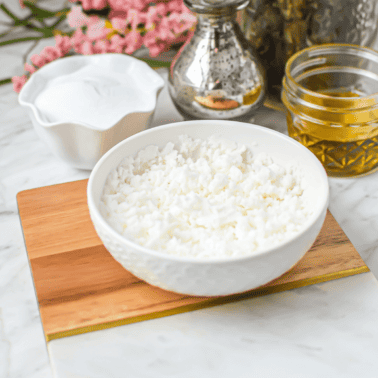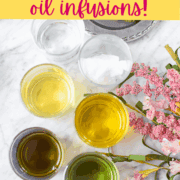Have you ever wondered what the difference between different types of cannabis oil is? Carrier oils not only deliver cannabinoids like THC and CBD; they also impact the flavor, shelf life, and how seamlessly you can incorporate your infusion into recipes. With so many oil options to consider, understanding their unique properties can help you elevate your cooking and achieve the best results every time.
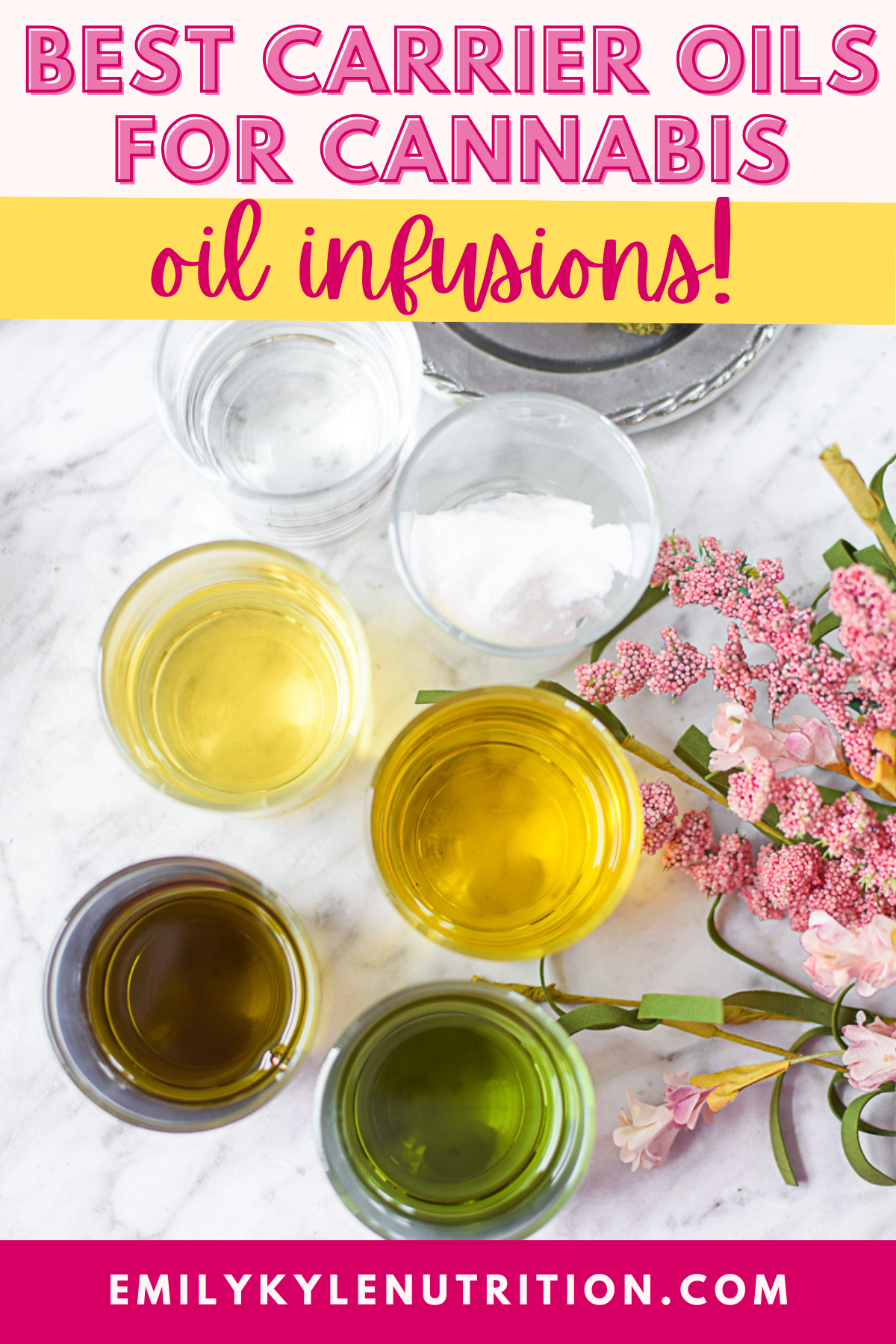
Table of Contents
- Article Features
- Why You Will Love This Guide
- What is a Carrier Oil?
- Types of Carrier Oils
- 1. MCT Oil (Medium-Chain Triglycerides)
- 2. Coconut Oil
- 3. Olive Oil
- 4. Hemp Seed Oil
- 5. Avocado Oil
- 6. Grapeseed Oil
- Other Carrier Oils
- What is the Best Carrier Oil?
- Carrier Oils to Avoid
- Elevate Your Infusion Game
- More Articles You Will Love
Article Features
- What carrier oils are and why they’re important for infusions
- The most popular carrier oils and their unique benefits
- Want to skip the hard work? Shop with me and have premium, high-quality cannabis products delivered directly to your door! Now shipping across the US.
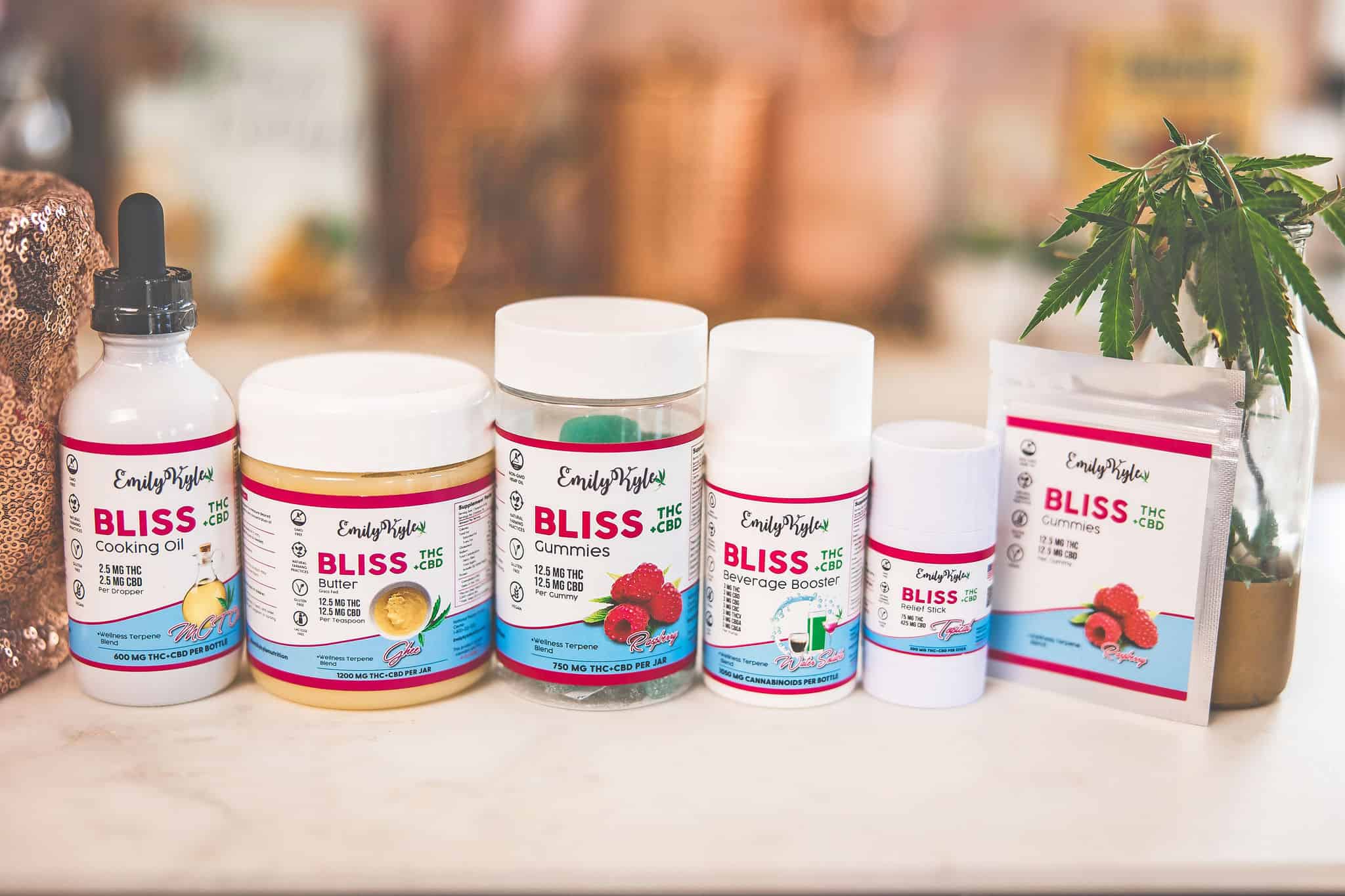
Why You Will Love This Guide
At first, infusing cannabis into oil may feel like a daunting task. I totally get it, members of my Well With Cannabis Community share this with me often.
With so many choices out there, it’s easy to feel stuck, but I’m here to make things simple and straightforward.
Whether you’re whipping up edibles or preparing cannabis oil to use under the tongue or in topicals, you’ll find tips and tricks to help you nail the process.
I’ll walk you through how to pick the best carrier oil for your needs and show you how different oils can impact things like flavor, potency, and effectiveness.
Plus, knowing how to do this yourself will save you time and money and give you complete control over your creations.
🌟 By the end of this guide, you’ll feel confident about making your own infusions—ones that match your tastes and goals perfectly.
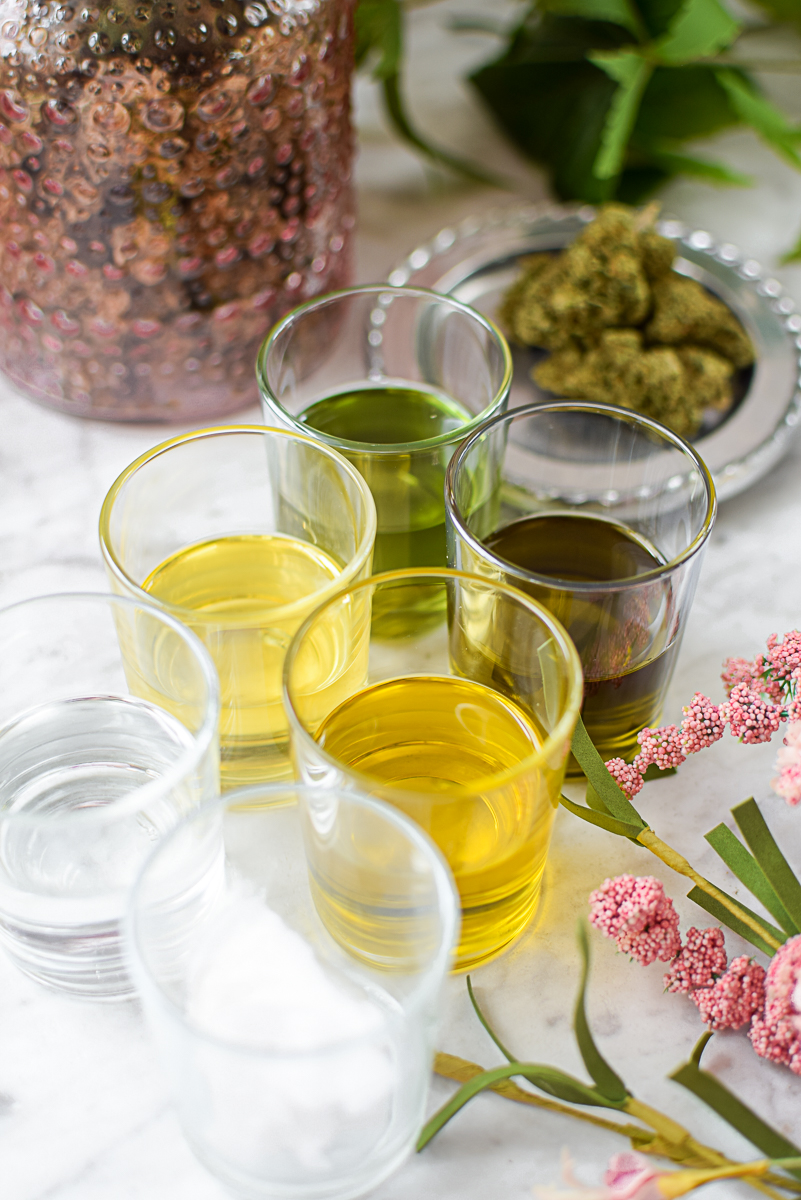
What is a Carrier Oil?
A carrier oil is a neutral, plant-based oil used to dilute and transport active compounds—in this case, our favorite cannabinoids.
Cannabis binds well with fats, so carrier oils act as a “vehicle,” helping cannabinoids absorb into your body efficiently when consumed.
Carrier oils are typically extracted from seeds, nuts, or fruits, and they’re stable enough to be used in cooking or stored for later use.
Each carrier oil offers unique properties that impact the flavor, texture, and overall quality of your cannabis infusion.
How They Shape Your Final Product
Selecting the right carrier oil is a game-changer when it comes to personalizing your infusion.
Carrier oils don’t just act as a base — they directly impact the potency, flavor, and even the way your body absorbs the final product.
For example, coconut oil is a popular choice because of its high fat content, which binds well with cannabis compounds like THC and CBD, optimizing extraction and absorption.
On the other hand, olive oil offers a rich, versatile flavor profile and is perfect for savory cooking or salad dressings, making it an excellent choice for culinary enthusiasts.
What’s truly exciting is how carrier oils allow you to customize your creations.
If you prefer a lighter oil that blends seamlessly into smoothies and beverages, MCT oil is a fantastic option.
Want to focus on skin care? Look to jojoba oil or sweet almond oil, which are gentle on the skin and packed with nourishing properties.
By understanding the characteristics of different carrier oils, you gain full control over both the functionality and the experience you’re crafting with your infusion.
The best part about making your own infusions is the freedom to create something that’s totally your own.
Whether you’re whipping up a sublingual oil, a soothing massage oil, or a tasty addition to your favorite recipe, the carrier oil you pick really matters. It sets the stage for everything else!
📛 With the right base, you can play around, experiment, and tweak your creations to match your personal taste, routine, or wellness needs. It’s all about making it work for you!
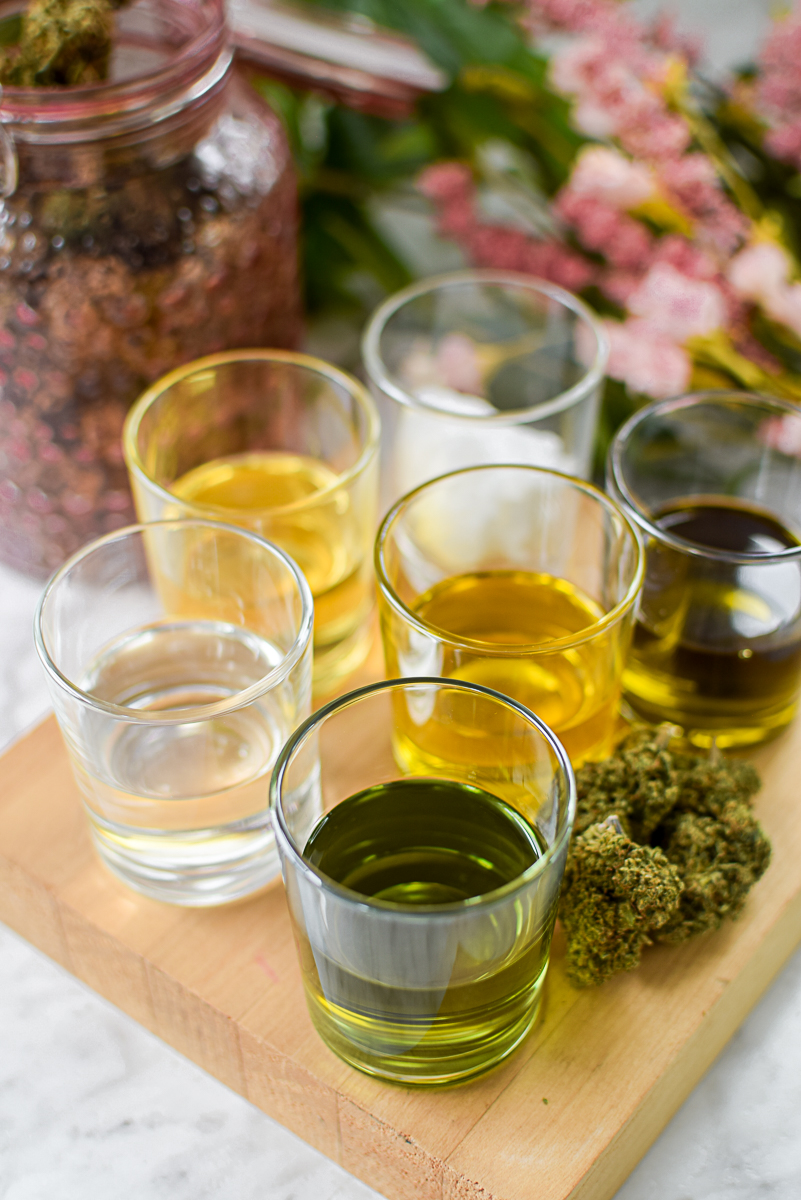
Types of Carrier Oils
Here’s an overview of popular carrier oils you can use for cannabis infusions, along with their key characteristics:
1. MCT Oil (Medium-Chain Triglycerides)
Cannabis-infused MCT oil is a popular cannabis infusion made with just cannabis flowers and MCT oil.
MCT oil is a type of saturated fat extracted from coconuts that are rapidly digested and absorbed by the body.
MCT oil remains liquid at room temperature, is completely clear with no color, and has no flavor.
Many people prefer liquid MCT oil for infusions because it is tasteless, although some people find it more difficult to digest than other oils.
This infusion can be held under the tongue or used in edibles or topicals.
You can get the recipe for making cannabis-infused MCT oil here.
- What is it? Derived from coconut or palm kernel oil, MCT oil contains medium-chain fatty acids that are quickly absorbed by the body.
- Why it’s great for cannabis: MCT oil has a high bioavailability, meaning cannabinoids are absorbed more efficiently compared to other oils. It’s flavorless, shelf-stable, and perfect for edibles or tinctures.
- Best uses: Sublingual (under the tongue), hot drinks, smoothies, and light cooking.

2. Coconut Oil
Cannabis coconut oil is a vital staple recipe for any cannabis cook to master.
Coconut oil performs similarly to butter in extracting cannabinoids from the plant matter, and it remains solid at room temperature.
Coconut oil is naturally dairy-free, vegan, vegetarian, plant-based, and allergen-friendly.
This cannabis-infused coconut oil is an excellent option for anyone following a specialty diet or looking for an alternative to traditional cannabutter.
- What is it? A popular edible oil derived from coconut meat, with a solid form at room temperature.
- Why it’s great for cannabis: Like MCT oil, coconut oil contains high levels of saturated fats, which bind well with cannabinoids. It also adds a mild coconut flavor, which can complement certain recipes.
- Best uses: Baking, butter replacement, and body balms.
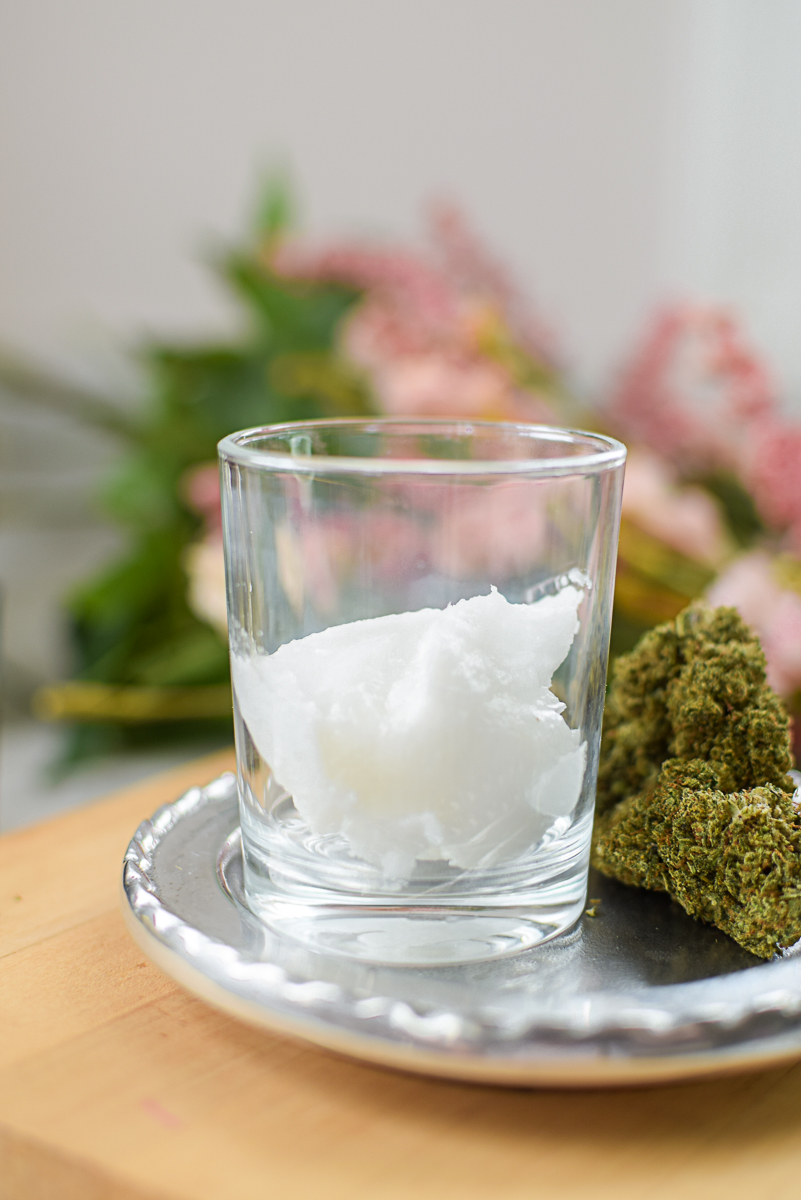
3. Olive Oil
Cannabis-infused olive oil is a light, delicious, and versatile cannabis infusion.
Cannabis olive can also serve as a vegan cannabutter alternative alongside coconut oil and MCT oil.
Cannabis-infused olive oil can be used to make many different delicious cannabis recipes, like my famous cannabis pesto or lemon cannabis vinaigrette.
You can get the recipe for cannabis olive oil here.
- What is it? A robust oil pressed from olives, commonly used in cooking.
- Why it’s great for cannabis: Rich in monounsaturated fats, olive oil enhances the infusion process and is an excellent choice for savory dishes. However, it has a shorter shelf life compared to MCT or coconut oil.
- Best uses: Dressings, marinades, and low-heat cooking.
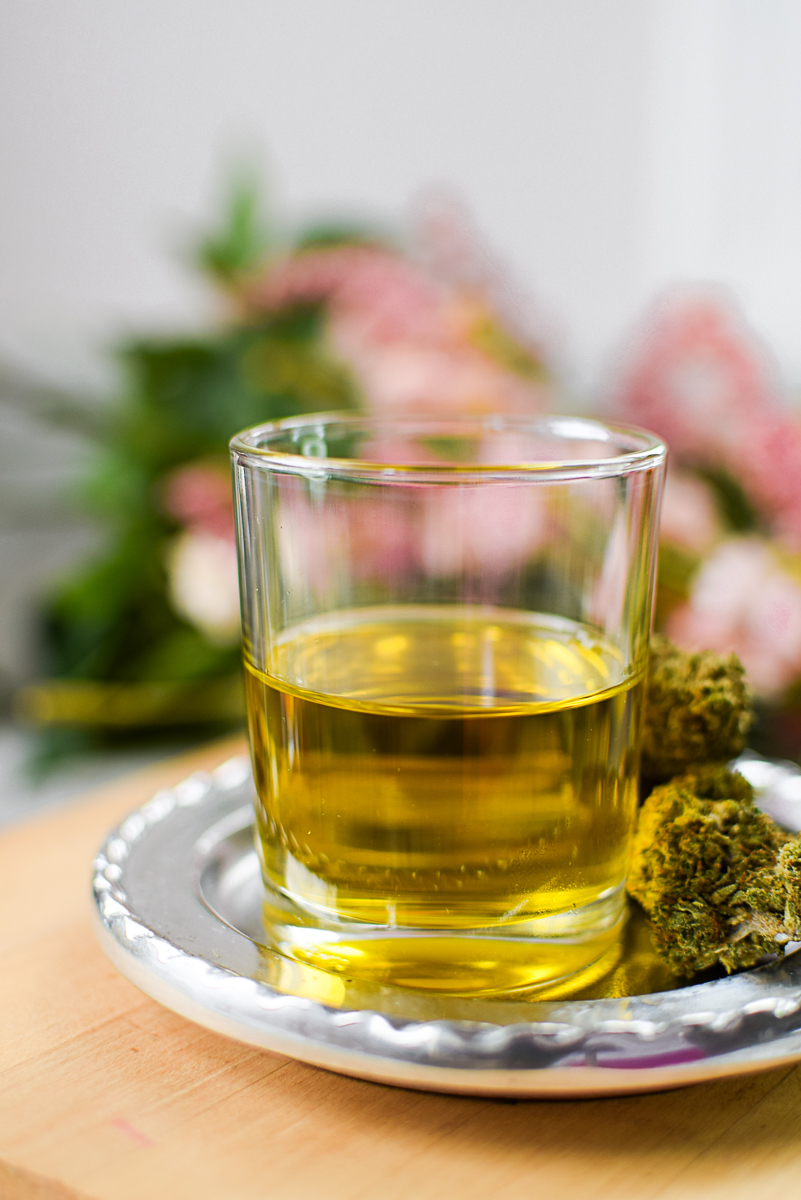
4. Hemp Seed Oil
Hemp seed oil is an excellent choice for a cannabis infusion because of its mild flavor and nutrient-rich profile.
Packed with omega-3 and omega-6 fatty acids, it not only supports overall health but also acts as a versatile base to carry cannabinoids when paired with other cannabis extracts.
While it doesn’t contain CBD or THC on its own, its light, nutty taste and nutritional benefits make it a popular option for creating well-rounded, health-focused infusions that are easy to incorporate into your daily routine.
- What is it? Extracted from the seeds of the hemp plant, hemp seed oil is rich in omega fatty acids.
- Why it’s great for cannabis: This oil is a perfect pairing for cannabis due to its similar origins. However, it works best for raw applications as it’s not ideal for high-heat cooking.
- Best uses: Salads, drizzles, and raw edibles.
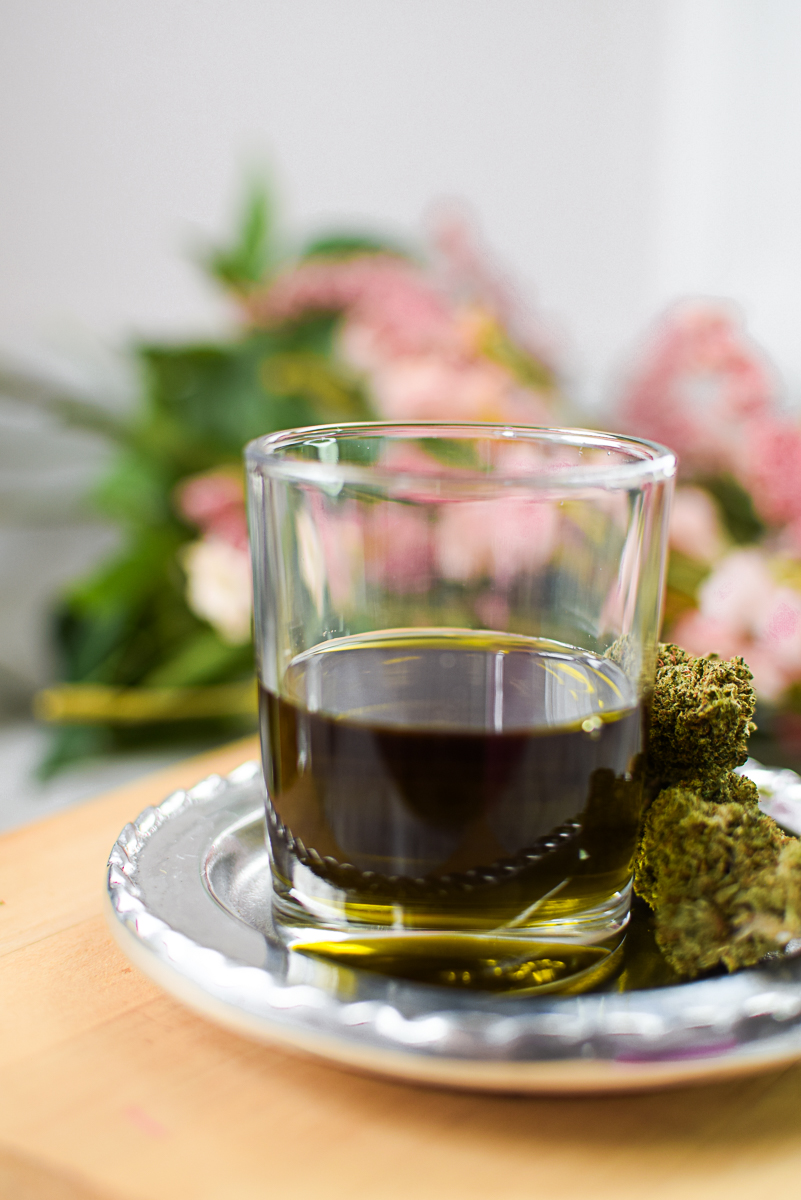
SAVE THIS GUIDE 💌
5. Avocado Oil
Avocado oil is an excellent choice for cannabis infusions due to its high-fat content, which helps extract and carry cannabinoids effectively.
It also boasts a mild, buttery flavor that pairs well with both savory and sweet recipes, adding a touch of richness to your dishes.
With a high smoke point, avocado oil is ideal for cooking methods like sautéing or baking, allowing you to use it in a wider range of recipes.
Additionally, it’s packed with healthy nutrients like omega-3 fatty acids and vitamin E, making it a nourishing option for your culinary creations.
- What is it? A nutrient-dense oil extracted from avocado pulp.
- Why it’s great for cannabis: Its rich, buttery flavor and high smoke point make it a premium choice for cooking infusions. It’s also high in monounsaturated fats, ensuring excellent absorption of cannabinoids.
- Best uses: Drizzle after sautéing or frying, making guacamole-infused dishes.

6. Grapeseed Oil
Grapeseed oil is a fantastic choice for cannabis infusions due to its light flavor and high smoke point, making it versatile for various recipes.
Its delicate taste allows the natural flavor of the cannabis to shine, without overpowering your dishes.
Additionally, grapeseed oil is packed with healthy fats and antioxidants, which may help preserve the potency of your infusion.
Its smooth texture and neutral profile make it especially ideal for infusing into dressings, marinades, or baked goods.
- What is it? Derived from grape seeds (a byproduct of winemaking). This oil is light and neutral.
- Why it’s great for cannabis: Grapeseed oil is a good option for recipes where flavor neutrality is important. It absorbs cannabinoids effectively but has a shorter shelf life.
- Best uses: Baking, drizzle after frying, and cold dishes like salad dressings.
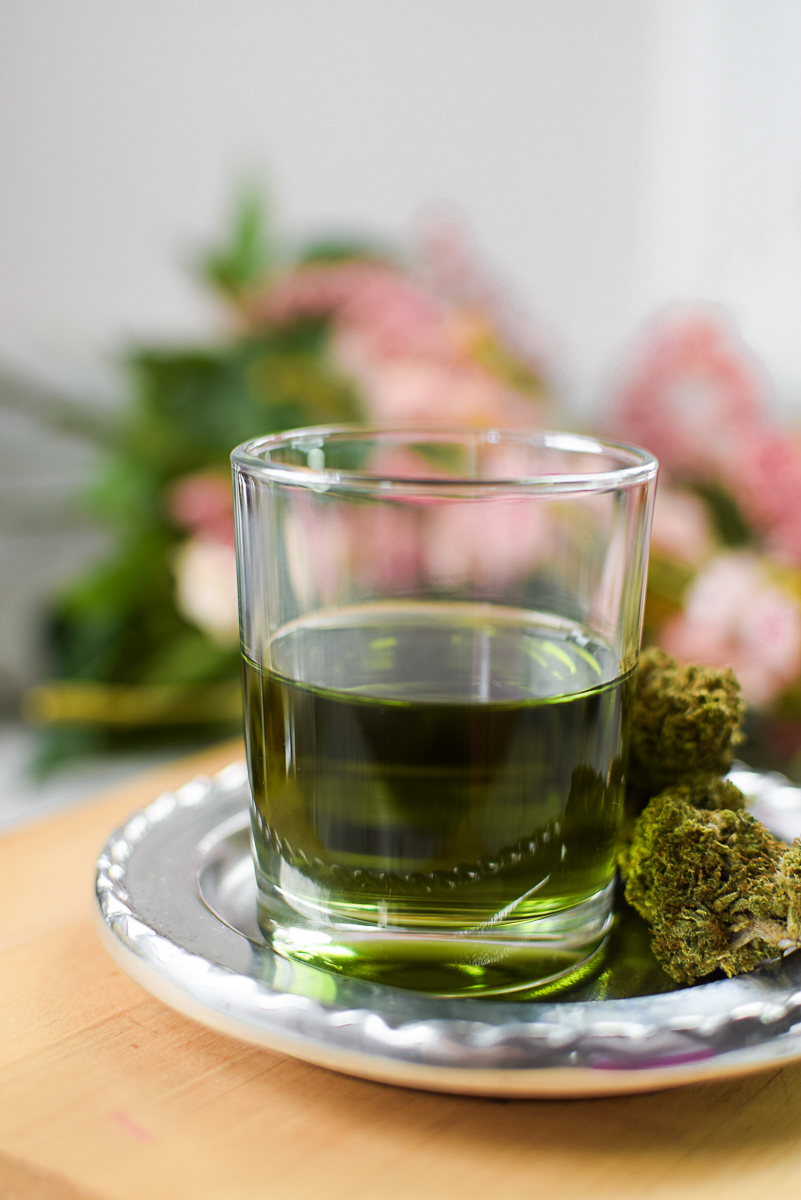
Other Carrier Oils
Of course, this list does not include every option. There are many different carrier oils that I did not mention here that you can use to create your perfect type of cannabis oil.
Remember, the infusion process will always be the same, no matter what type of oil you use.
- Sunflower seed oil
- Safflower seed oil
- Vegetable oil
- Sweet almond oil – for topicals
- Jojoba oil – for topicals
What is the Best Carrier Oil?
The best carrier oil ultimately depends on your needs and how you plan to use your infusion. For example:
- For versatility, MCT oil and coconut oil are ideal because of their high absorption rates and mild flavor.
- For savory dishes, Olive oil is perfect for enhancing the flavors of Mediterranean-inspired cooking.
- For high-heat cooking: Avocado oil, with its high smoke point, is a top choice.
- For raw applications, Hemp seed oil or sunflower oil works beautifully in salads or as a finishing drizzle.
Bottom Line
If you’re looking for a universal option, MCT oil often shines as the go-to carrier oil for cannabis infusions due to its bioavailability, long shelf life, and neutral flavor.
Carrier Oils to Avoid
While most carrier oils are suitable for cannabis infusions, avoid these options for better results:
- Butter
While cannabutter works great in edibles like brownies, it doesn’t have the stability or shelf life of true carrier oils. Stick to butter for short-term recipes only.
- Mineral Oil or Petroleum-based Products
These aren’t edible and are only suitable for external-use products like balms.
- Low-quality Oils
Chemically refined or solvent-extracted oils may contain residual chemicals or lack the quality needed for effective infusion. Always choose food-grade, cold-pressed oils where possible.
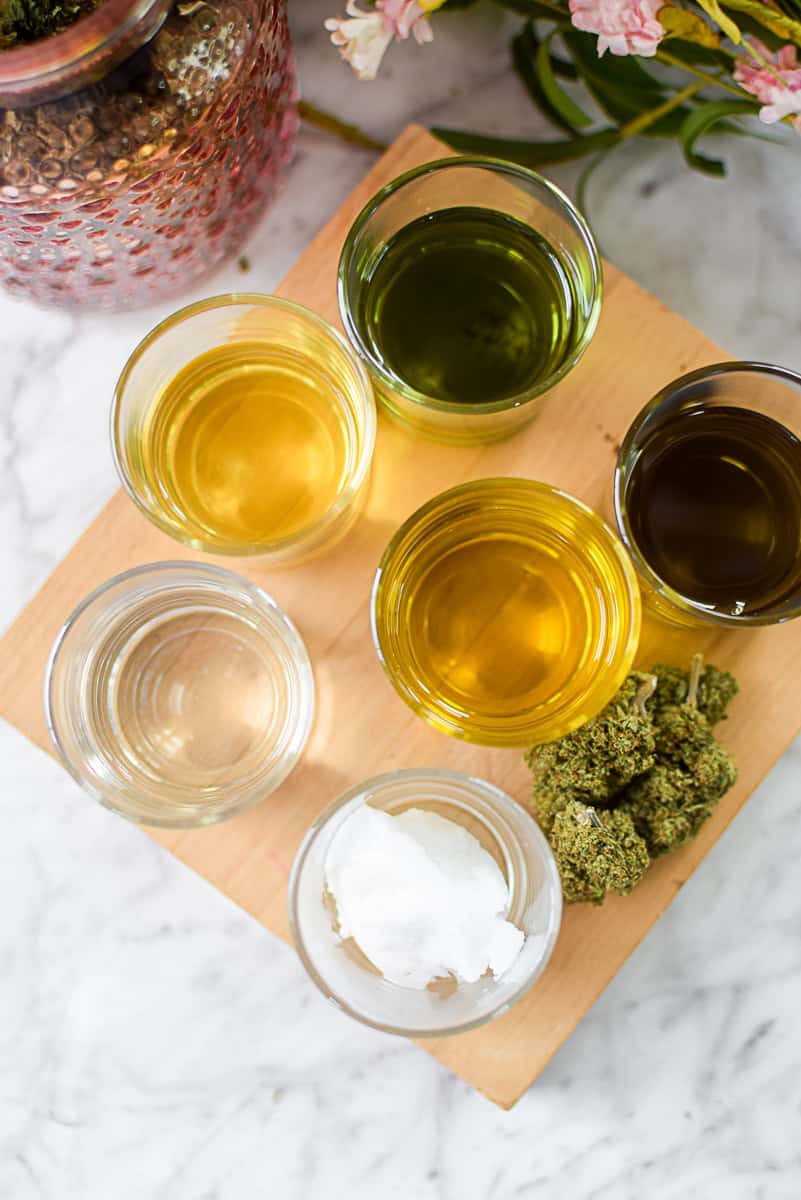
Elevate Your Infusion Game
Using the right carrier oil ensures your cannabis infusions are flavorful, potent, and versatile.
Experiment with different oils, tailoring your choice to match your recipes and preferences.
Whether you’re creating edibles for personal enjoyment or sharing them with a friend or loved one, the carrier oil you choose helps set the tone for a delicious and effective final product.
And if you’re looking for even more support and guidance on your edible journey, come join me inside the Edibles Made Easy Course.

Take your edibles to the next level…
My Edibles Made Easy Online Cooking Course will teach you how to easily make cannabis edibles and topical recipes at home. This step-by-step video course will teach you how to infuse, extract, and create edibles with many different product types – all from the comfort of your own home.
More Articles You Will Love
Cannabis Infusions & Extractions
Instant Pot Cannabutter or Oil » Easy Guide
Cannabis Infusions & Extractions
How to Make Full-Extract Cannabis Oil (FECO)
All Things Cannabis Oil
Easy Cannabis-Infused MCT Oil
All Things Cannabis Oil
How to Make Cannabis Oil Powder


